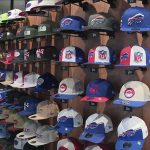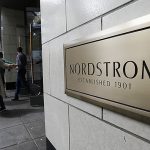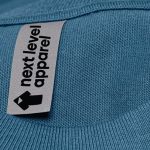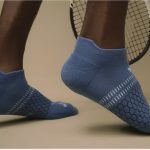Icebreaker last week opened its first flagship store in the U.S. in New York City The 2,500-square-foot store, located at 102 Wooster Street, between Spring and Prince Streets, sits directly across the street from Patagonia’s SoHo location.
At the opening ceremony on Dec. 1, Jeremy Moon, founder and CEO, discussed the brand's origins as well as his ongoing effort to teach consumers to “Feel Fantastic Without Plastic” through the wonders of merino wool.
The store has already attracted a few celebs, including a visit from alternative-medicine guru Deepak Chopra, a friend of Moon; as well as one from fellow New Zealander Jemaine Clement, who starred in the HBO series, Flight of the Conchords. (Moon bought along his personal celebrity, new fiancé Emily, to the opening event).
The B.O.S.S. Report caught up with Moon before the opening night festivities to get his insight on the retail strategy for the New Zealand-based company.
“When we launched in the U.S. five years ago and began learning about the market we cast a fairly broad net,” explained Moon when asked why Icebreaker decided to open a flagship store in New York City. “And we decided to make investments in two key areas. One is the core of the outdoor industry through the wholesale network, which are outdoor stores and resorts.
The second was through some style centers. So New York is probably the biggest style center in the U.S. and it has a global customer base. But is also gives us access to the media and helps us connect to the connectors in a way that will help us raise our profile. So it's a big investment for a small company but having a flagship in a place like SoHo is already having a huge impact on our business.
Icebreaker Retail Strategy More About Connecting…
Moon said the company now has ten total stores, with one in Portland, OR where the company’s U.S. operations are based, one in Montreal and six in New Zealand. “We're opening one in Vancouver, Canada next year,” said Moon. “You'll see a small number opening in strategic locations in the U.S. but the main focus is on wholesale.”
“We call our stores TouchLabs and each features an area where shoppers can touch raw merino,” explained Moon when discussing the primary reasons for opening the stores.
Moon went on to explain that computer screens also give access to the company’s Baacode traceability program to help consumers learn how merino wool is produced. “But the stores are also about educating ourselves,” he offered. “We needed to get closer to our customers. We needed to be able to explain our clothing system better. We needed to get to the core of our ideas quicker by learning from our customers. That's why our stores are set up like a laboratory. We're rapidly prototyping and tweaking ideas at our stores. We then do a pull down of what we've learned and feed it through our wholesale network.”
When discussing consumers’ reception of the Merino wool message Moon said they have been seeing a lot of momentum since Time magazine ran a piece on the brand in March 2010.
“They wanted to understand how we created a whole new category around a fiber that was dead. Wool was dead and now it's hot,” he furthered. “A lot of people have copied us but we were the first to do a merino wool layering system when started in 1994. So Backpacker magazine has also run some pieces on us as having the base layer so a lot of momentum is beginning to pick up around it. And that’s great because many people still assume wool's itchy, heavy, and prickly. We're starting to demonstrate that merino wool is lightweight and soft and sensual. We're also twice the price of synthetics so we need to work hard to create value for our customers.”
On the business side, Moon suggested that the Icebreaker business is expected to be “up 25% this year” and the company is sitting at around $115 million in U.S. currency.
“Every market is up this year,” said Moon “In the U.S., we've got a team of over 40 in our Portland offices and 20 people on the road selling. So we're beginning to grow our retail footprint and retailers are noticing a huge word of mouth kicking in right now and a huge amount of repeat business kicking in this fall.” Moon said their Europe business is on fire. “Instinctively, Europe gets the Icebreaker concept more quickly than North America because all the world's leading outdoor brands all come from the U.S.,” he said. “They've done a fantastic job of educating people about synthetics and we're about creating an alternative to that so we need to start a whole new conversation. So it's a fantastic challenge. Icebreaker was founded on the principle of creating choice in an age of synthetics. Even in New Zealand when I started the business, everything was polyester or polypropylene. So every market is an education process.”
Moon said the growth of the business and brand acceptance worldwide has come despite the pricing issues that were said to be a “huge deal over the first two or three years.” He went on to say the brand had a booth at the New York City Marathon in November and they sold out of product. “It's about connecting with the right people and it's about working out the trigger points for each sport, he explained. “For example, the conversation in the running market is about breathability and no odor. In the ski market, it's all about insulation. In travel, a big market for us, it's about taking less pieces and packing light. That's why we're doing specialized lines, such as specific run and bike collections for Spring 2011. We can't be a generalist in these specialist markets.”
In closing, Moon intimated that the value of what is real goes up as the world becomes increasingly “unreal.” That perspective leads him to believe that Icebreaker is going to have a “great year” in 2011.













